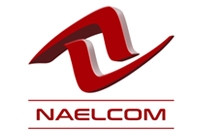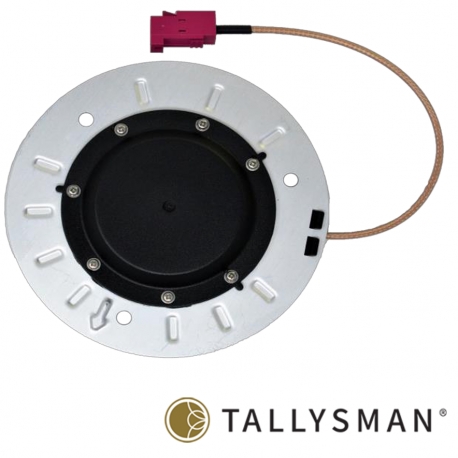TWA928LXF 
AccuAuto Embedded Autonomous Vehicle Triple-band GNSS Antenna + L-band
- Integrated ground plane
- Light, compact, and robust design
- Low noise preamp (< 2.5 dB typ.)
- Axial ratio (< 2.0 dB typ.)
- Tight phase centre variation (PCV)
- High-gain LNA (28 dB typ.)
- Low current (28 mA)
- Low noise figure (2.5 dB)
- ESD circuit protection (15 kV)
- Invariant performance from 2.5 to 16 VDC
- IP67, REACH, RoHS, AEC compliant
The Tallysman® TWA928LXF AccuAuto Embedded Autonomous Vehicle antenna has been designed to meet the demanding needs of the autonomous vehicle market. It features a patented Tallysman® Accutenna® technology multi-constellation and multi-frequency antenna element. This antenna features an integrated ground plane, radome, and underside cover that provides mist and condensation protection. The bottom cover also supports the antenna cable and mitigates cable vibration to ensure the antenna has a long service life, while the ground plane improves antenna performance. All TWA928LXF electronic components are Automotive Electronics Council (AEC) certified, designed to perform under the most challenging environmental conditions, such as extreme temperatures, continuous shock, and vibration.
The patent-pending TWA928LXF antenna employs Tallysman’s unique Accutenna® technology, providing high gain over GPS/QZSS-L1/L2/L5, GLONASS-G1/G2/G3, Galileo-E1/E5a/E5b, BeiDou-B1/B2/B2a, and NavIC-L5, including the satellite-based augmentation system (SBAS) available in the region of operation [WAAS (North America), EGNOS (Europe), MSAS (Japan), or GAGAN (India)], as well as L-band correction services.
The patent-pending TWA928LXF antenna employs Tallysman’s unique Accutenna® technology, providing high gain over GPS/QZSS-L1/L2/L5, GLONASS-G1/G2/G3, Galileo-E1/E5a/E5b, BeiDou-B1/B2/B2a, and NavIC-L5, including the satellite-based augmentation system (SBAS) available in the region of operation [WAAS (North America), EGNOS (Europe), MSAS (Japan), or GAGAN (India)], as well as L-band correction services.
eXtended Filtering was added to the Tallysman TWA928L antenna to mitigate new radio frequency bands that interfere with GNSS signals. For example, new LTE bands have been activated, and their signal or harmonic frequencies can affect GNSS antennas and receivers. In North America, the planned Ligado service, which will broadcast in the frequency range of 1526 to 1536 MHz, can affect GNSS antennas that receive space-based L-band correction service signals (1539 – 1559 MHz). Similarly, new LTE signals in Europe [Band 32 (1452 – 1496 MHz)] and Japan [Bands 11 and 21 (1476 – 1511 MHz)] have also affected GNSS signals. Lastly, the Inmarsat satellite communication uplink (1626.5 – 1660.5 MHz), commonly used on maritime vessels, can also affect nearby GNSS antennas.
Field tests have confirmed that Tallysman’s custom XF filtering mitigates the new (Europe and Japan) and existing LTE signals, enabling the XF antenna to produce clean and pure GNSS radio frequency data.
Other key components are precision-tuned, twin circular dual-feed (Patented Accutenna® Technology), stacked patch elements. The signals from the two orthogonal feeds are combined in a hybrid combiner, amplified in a wide-band LNA, then band-split for narrow filtering in each band and further amplified prior to recombination at the output. These features allow the TWA928LXF antenna to offer an excellent axial ratio, enabling multipath mitigation, leading to a very tight antenna phase centre.
Tallysman®’s TWA928LXF antenna is ideally suited for Real-Time Kinematic (RTK) and Precise Point Positioning (PPP) positioning, for autonomous vehicle navigation and guidance, and other applications where accuracy and precision matter.
| L-band Correction | Required |
| Antenna Frequency | Triple Band GNSS |
| Mount | OEM / Embedded |
| Brand | Calian |
| Description | Part-Number |
|---|---|
| TWA928LXF | 33-A928LXF-xxxx |



